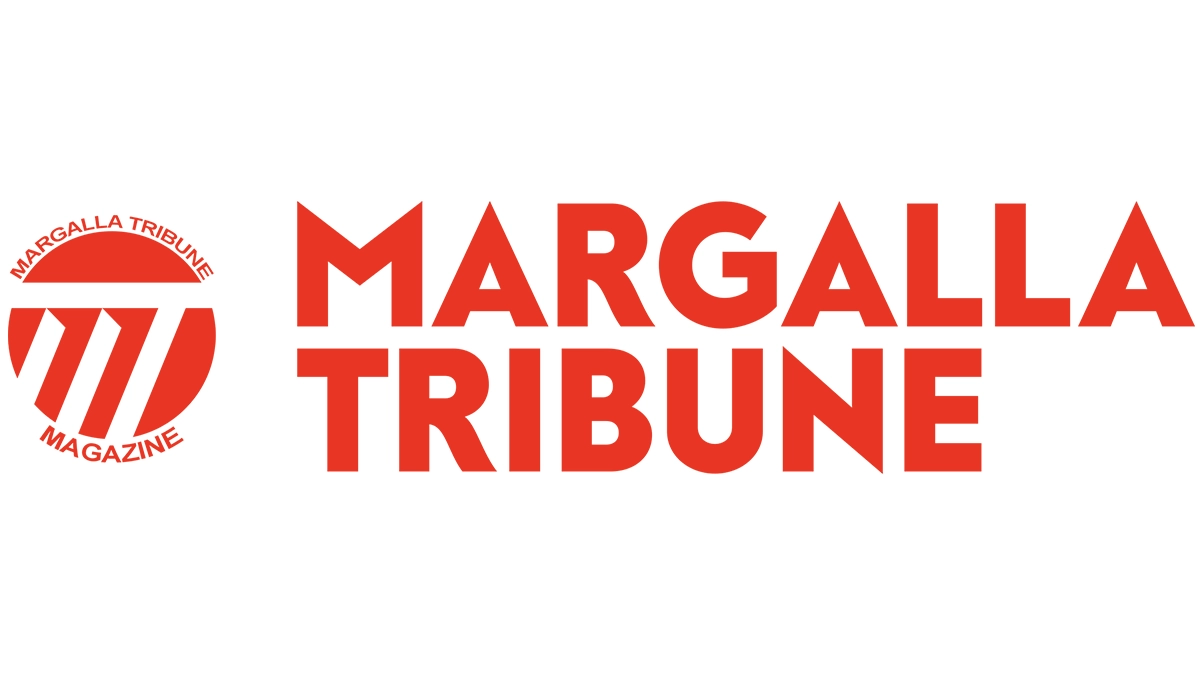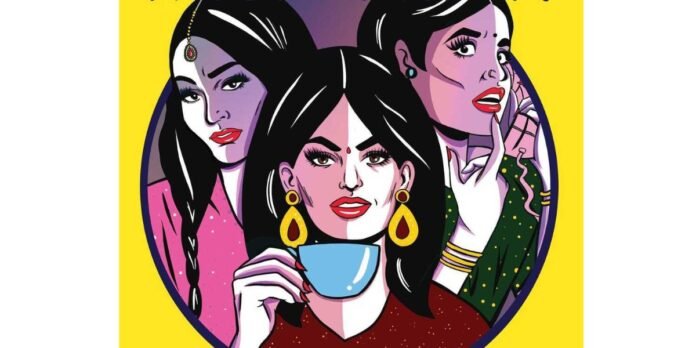Pakistani Women Artists Redefine Freedom and Women’s Rights
Pop Art, a vibrant and accessible art form rooted in consumer culture and mass media, has evolved into a powerful medium of social critique worldwide. In Pakistan, this movement has taken on a distinct role, serving as a subversive tool for women artists who challenge societal norms, reclaim agency, and advocate for women’s rights. By appropriating pop culture symbols and infusing them with bold, provocative messages, Pakistani women artists have successfully harnessed the visual language of Pop Art to critique patriarchy, question cultural norms, and advocate for gender equality.
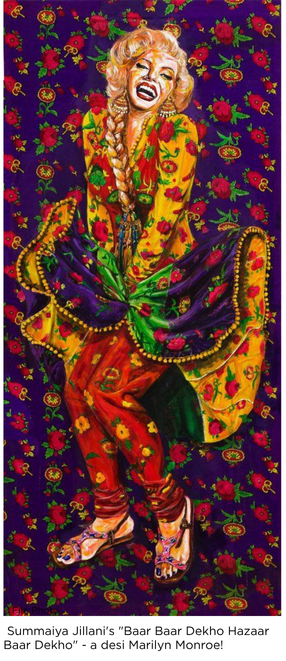
Pop Art as a Global Medium of Rebellion
Pop Art emerged globally in the 1950s as a visual rebellion against consumerism and mass media, evolving into a medium for socio-political commentary worldwide. In Pakistan, marked by cultural conservatism and social inequality, women artists adopted Pop Art to challenge societal norms, using bold imagery and satire to critique gender roles, violence, and stereotypes. Their work became a vibrant form of self-expression, amplifying feminist voices and reshaping the visual art landscape.
Notable Pakistani Women Artists Using Pop Art as a Medium
Summaiya Jillani: Jillani employs a bold pop art style to question societal expectations of women, focusing on issues such as body image, mental health, and self-empowerment. Her work often juxtaposes traditional Pakistani motifs with contemporary pop culture references, creating visually engaging pieces that challenge the viewer to reconsider entrenched gender norms.

Maria Qamar (Hatecopy): A Pakistani-Canadian artist, Qamar uses pop art to satirize the cultural expectations imposed on South Asian women. Her work, characterized by bold colors and comic-style imagery, critiques societal norms and explores themes of identity, cultural conflict, and diaspora experiences. Qamar’s art often draws from her personal experiences of growing up as a South Asian woman in the West, using humor and irony to subvert stereotypes.

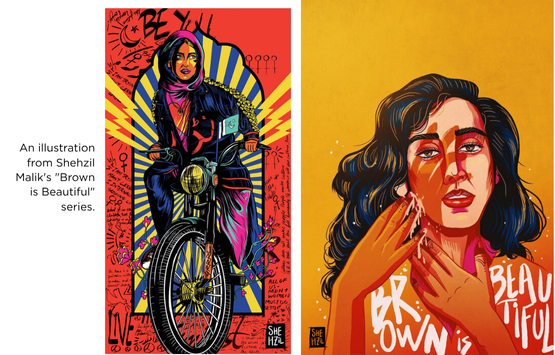
Shehzil Malik: An illustrator and graphic designer, Malik uses pop art-inspired visuals to challenge cultural norms around women’s autonomy. Her work, which often depicts women in powerful, defiant poses, has become iconic for its unapologetically feminist stance. Malik uses Instagram and other digital platforms to amplify her art, making her work accessible to a global audience.
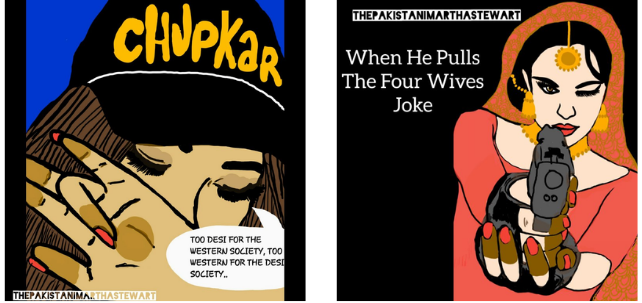
Saher Sohail: An emerging artist known for her vibrant pop art pieces that tackle societal taboos and women’s rights in Pakistan. Sohail’s work often uses visually striking, bold imagery to confront issues such as domestic violence, gender inequality, and societal repression. Her art serves as a visual protest, combining contemporary pop aesthetics with traditional cultural motifs to engage and provoke viewers.
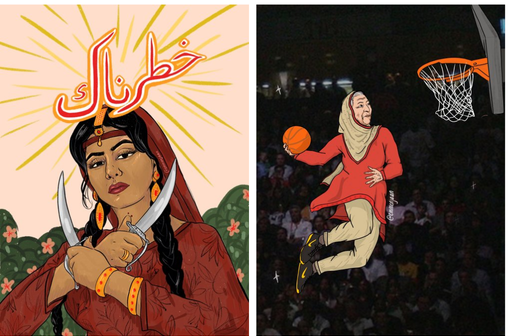
Eemaan Bano Rehman: A multidisciplinary artist whose work incorporates pop art styles to explore themes of identity, belonging, and social justice. Rehman’s art is heavily influenced by Pakistani pop culture and street art, using familiar imagery to address issues such as class disparities, gender norms, and political unrest. Her use of vibrant colors and playful aesthetics masks deeper, critical messages about power dynamics in Pakistani society.
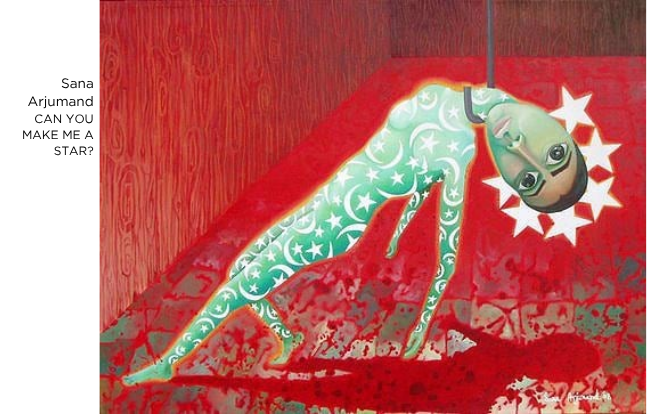
Sana Arjumand: Known for her visually captivating work that merges cultural motifs with pop culture aesthetics, Arjumand explores themes of femininity, cultural identity, and hybridity. Her use of bold colors and repetitive imagery serves as a powerful critique of gender norms and societal expectations in contemporary Pakistan.
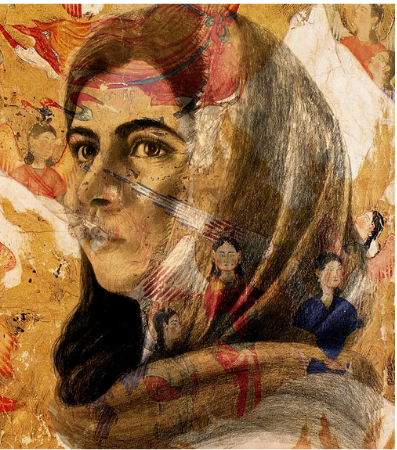
Shazia Sikander: Although her work extends beyond traditional Pop Art, Sikander’s fusion of miniature painting with contemporary pop aesthetics challenges conventional narratives of femininity and power. Her work often addresses issues of identity, power dynamics, and cultural memory, using a mix of historical and modern iconography.
Shazia Sikander’s portrait of Malala depicts her with a resolute expression, gazing into the distance with a sense of purpose and resilience. The background features angels, symbolizing flight, imagination, and the spread of hope.
Key Themes in Pakistani Pop Art by Women Artists
Freedom and Autonomy: Artworks that depict women in bold, defiant poses, challenging societal expectations of passivity and subservience.
Resistance and Rebellion: Satirical pieces that use pop culture imagery to critique patriarchal norms and oppressive cultural practices.
Intersectionality and Identity: Works that merge traditional motifs with contemporary pop aesthetics, reflecting the complex identities of modern Pakistani women.
Consumerism and Media Critique: Satirical depictions of media portrayals of women, exploring the commodification of the female body and the impact of media on self-image.
Pop Art and the Future of Feminist Expression in Pakistan
As digital platforms gain prominence, Pop Art’s influence continues to expand, offering Pakistani women artists new ways to engage with global audiences. The emergence of NFTs, digital exhibitions, and social media provides a platform for contemporary feminist Pop Art, allowing artists to amplify their voices and challenge cultural narratives on a broader scale.
Moreover, as the socio-political landscape in Pakistan continues to evolve, Pop Art remains a vital tool for expressing dissent, celebrating cultural hybridity, and advocating for women’s rights.
Pop Art in Pakistan is more than a visual style; it is a bold, defiant form of resistance employed by women artists to challenge societal norms, reclaim narratives, and advocate for gender equality. Through their striking use of color, imagery, and satire, these artists transform Pop Art into a powerful platform for social critique and feminist expression, reminding audiences that art is not just a reflection of society but a force for transformation.
